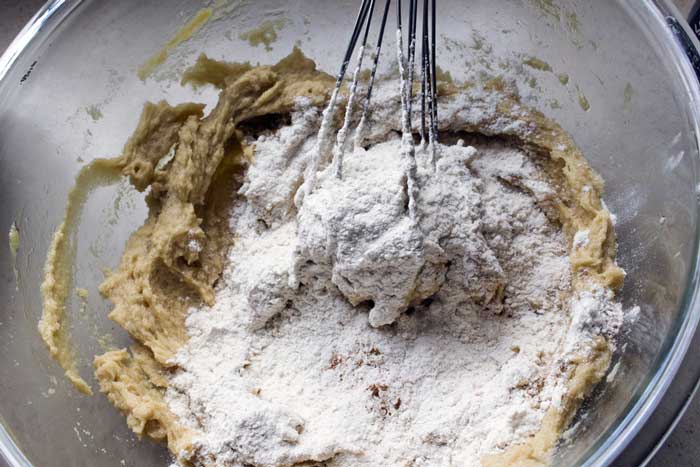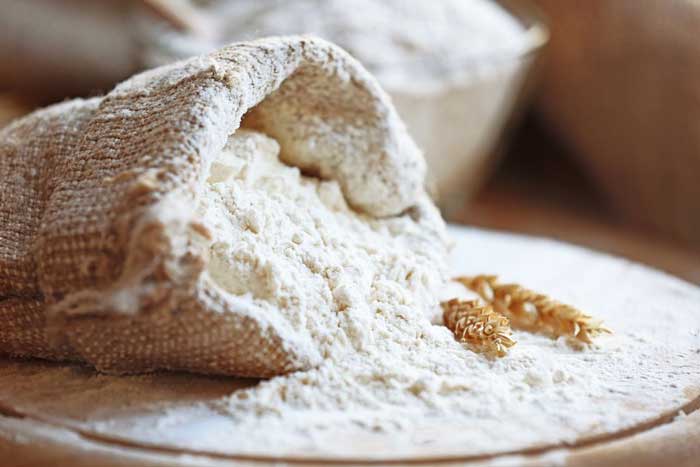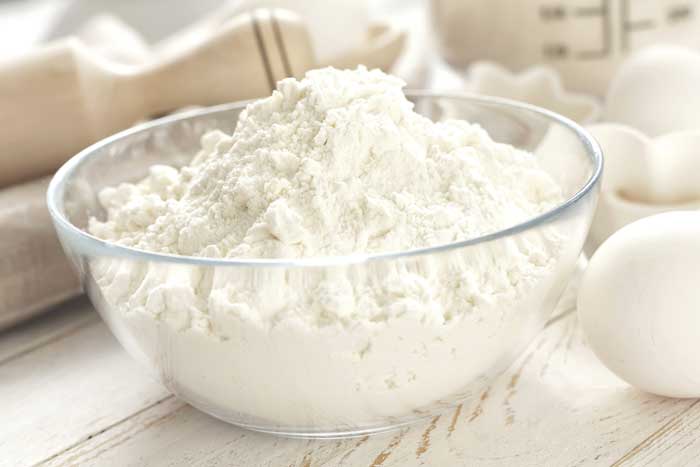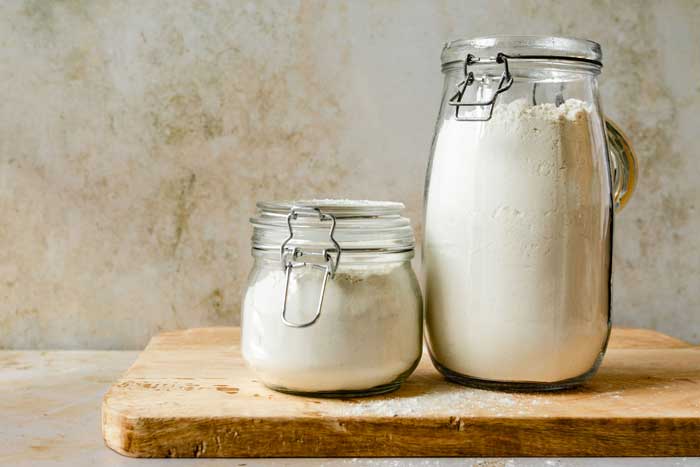Flour is not just an essential ingredient you need for baking. It also has a vital role to play in our everyday diet. That’s why we always have some stored in our pantry. You’ll also find various flours in the market, all made by grinding and milling different grains, beans, nuts, seeds, etc.
But now the concern is, how long does flour last without getting rancid? What can we do to keep them fresh for a long time? How to tell if the flour is no longer edible?
To know all these, keep reading this article.
Does Flour Really Get Spoiled?
As the Food Safety and Inspection Service (FSIS) states, “All foods eventually spoil if not preserved.” Therefore, the answer is YES; flours also get spoiled or rancid if you don’t store them properly.

There are mainly two reasons for your flour to get spoiled: rancidification and bugs. Rancidification is the process in which your food gets an undesirable smell, and its texture is changed. It happens by chemical changes in nutrition, especially if they are left open and exposed to air, water, light, and certain bacteria.
Flour bugs, on the other hand, are known as weevils. They may come to your pantry from your local store or directly from the warehouse. Weevils are small and have a reddish-brown texture. If the amount of this bug in your flour is too many, better dispose of the whole thing!
The Shelf Life of Various Flours
We’ve various flours available in our stores nowadays. If you keep them at room temperature, each has a different shelf-life; the average is 3-8 months. But if you keep them in your fridge, the shelf life almost doubles comparing with keeping them in pantries.
Let’s have a look at the shelf-life of few regularly used flours:
- Regularly used in households, all-purpose flour has a longer shelf life compared to others. It approximately stays healthy for a year.
- Bread flours stay unrotten for six months.
- Self-rising flours have a healthy life of around 4-6 months.
- Oat flours and white whole wheat flours also have a lifespan similar to self-rising flours.
- Whole wheat flours stay edible for 1-3 months.
- Gluten-free flours and alternative flours have a shelf life of around three months.
How to Tell if Flour Has Gone Bad
There are few simple ways to identify if your flour got spoiled or not. We’ll try to cover most of them below.
Check the Expiry Date
Checking the expiry date is the easiest way to figure it out, frankly speaking. Most packaged flours have it written on their packet. Although, quite often, the flours may stay healthier even after meeting their expiry dates. Also, you can prolong their lifespan by keeping them in the fridge.

Sniff the Flour
If you find a terrible odor while sniffing the smell of your flour, that is one significant indicator that this thing may have got spoiled. Smelling the flour is the best way to check it, according to many experts.
Taste It
You may not like to do it, but this is another good way to figure out if your flour is okay or not. If the taste is abnormal, then be sure that it got spoiled. Usually, flours have a neutral smell, whereas bad flour smells sour and musty.
Texture Changed?
There are specific colors for each flour. Some are white, some are off-white or cream color, some are brown or brownish. If the natural color of these flours changes, then that’s a definite red flag! Also, check for clumpy and wet textured flour.
Molds in the Flour!
If you see molds have grown in and around your flour, throw the whole thing away – that’s a piece of genuine advice. Please, don’t act like a miser. You can buy some flours anyway; they are not that costly.
Do You See Bugs?
Seeing bugs walking all around the flour might freak out any average person. If the amount of these bugs is too many, you may discard the bag immediately.
But if the color, smell, or texture hasn’t changed due to the presence of these little things, and you are sure that you can remove all the bugs from the flour, then it is still safe to eat; you can keep it.
Can I Use Bad Flour?
The answer depends on one thing, how bad is it? There’s no recent study that concludes rancid flours are that harmful to our health. If you can ignore the odd smell, you may eat them. But don’t eat it for a long time or in a large amount. Please don’t make it a habit!
If you find your flours moldy, it’s better to dispose of them – as we have advised earlier. Some molds contain harmful substances such as mycotoxins, which may cause diarrhea or vomiting. You can’t identify which moldy flour has mycotoxins, so removing them from your pantry is the best option.
About bugs, we’ve already told you that if you can get rid of them all, and if the texture, smell, color hasn’t changed of the flour, you may keep them.
How to Store the Flour Properly: A Few Tips
Knowing how to store flours properly is essential. It will save you from facing future hassles. There are some techniques for keeping them:

The Lesser the Oil, the Better
The oil in flour causes it to spoil by oxidizing, so lesser oil in flour is better. Refined flours such as white flour, all-purpose flour, self-rising flour, bread flour, etc., don’t hold too much fat. Therefore, they don’t spoil early.
Keep the Flour in Fridge for Making It Bug-Free
Keep the fresh white flour in your fridge for at least two days to make it bug-free. The bugs and their eggs die within this time. Now transfer all the flours into a food-grade plastic or glass container. Don’t forget to close the lid every time you open it tightly.
Other refined flours such as all-purpose or self-rising should always be kept in a cool, dry place. If you keep them in your fridge, it will double their shelf life.
Unlike refined flours, whole-grain flours such as wheat, rye, rice, oat, etc., contain bran, germ, and endosperm. Keep in mind that bran and germ contain oils. These substances make whole-grain flours more nutritious and healthier. But the bad part is, oily bran and germ cause these flours to ruin quicker than the refined ones.
To keep whole-grain flours fresh, keep them in your fridge for two days, transfer them to a food-grade and well-sealed container, and put them in the refrigerator.
Every time you use this flour, don’t forget to tighten the lid and put it back into the fridge. In this way, whole-grain flours will stay fresh for a longer time.
Wash the Container before Keeping the Flour
Bugs come to our flour from shops or from the manufacturer itself. If you found your previous flours contaminated with bugs and you didn’t properly wash the container where you kept them, it might also cause the bugs to flourish.
So, wash your container before pouring new flour into the container. Keeping the flour in the fridge will cause kill off the bugs.

To check if there are bugs in your flour, spread them over a bowl and flatten it. Now keep this bowl at sun-heat. If you see any crawling pattern on the flattened surface of the flour, it will indicate bugs. It’s better to throw it away.
Final Words
These are standard methods of figuring out if your flour might have gotten spoiled and how to get rid of it. Hopefully, you now know how to tell if the flour’s no longer edible. And don’t forget to throw away your bad flours out of the pantry!

